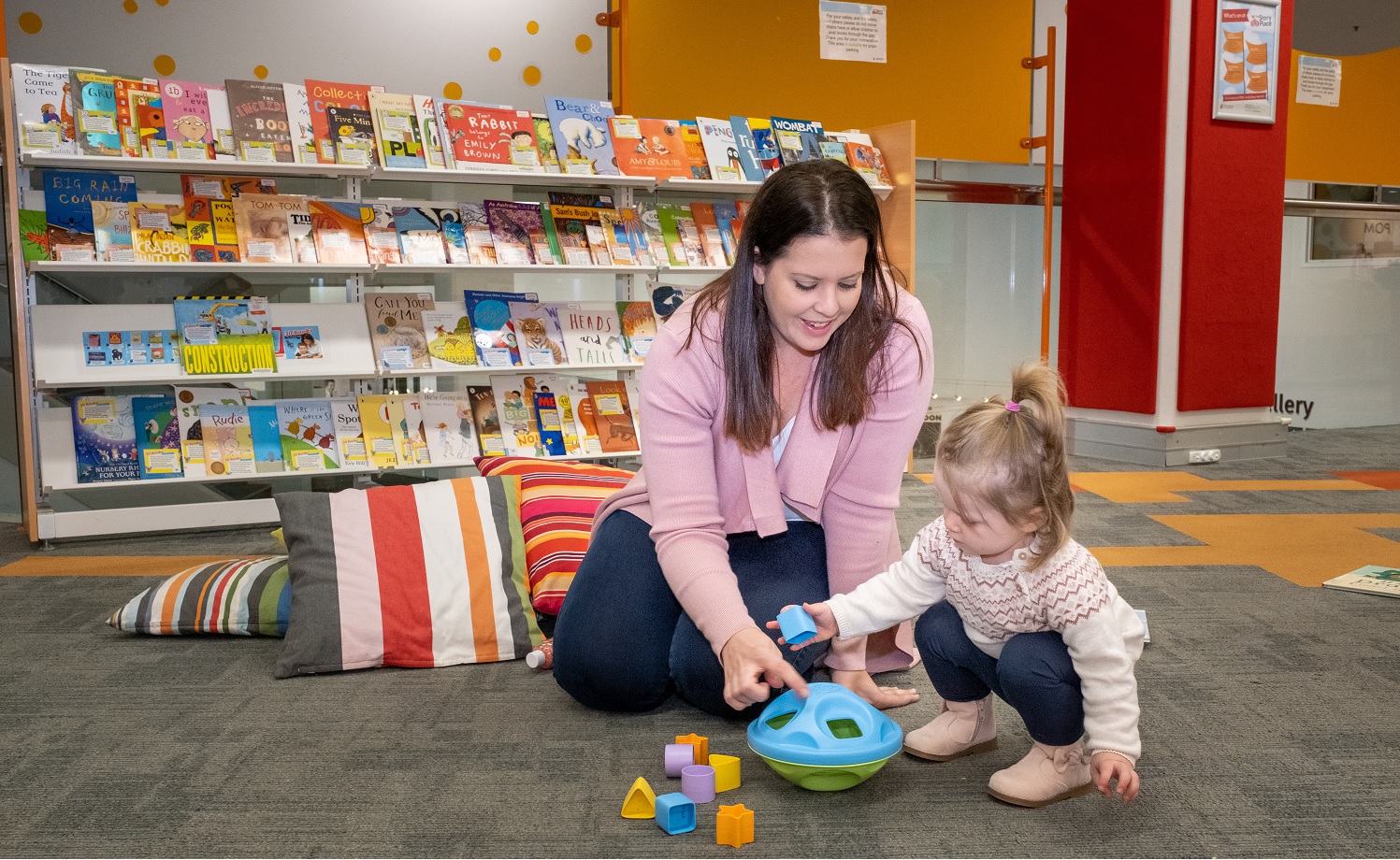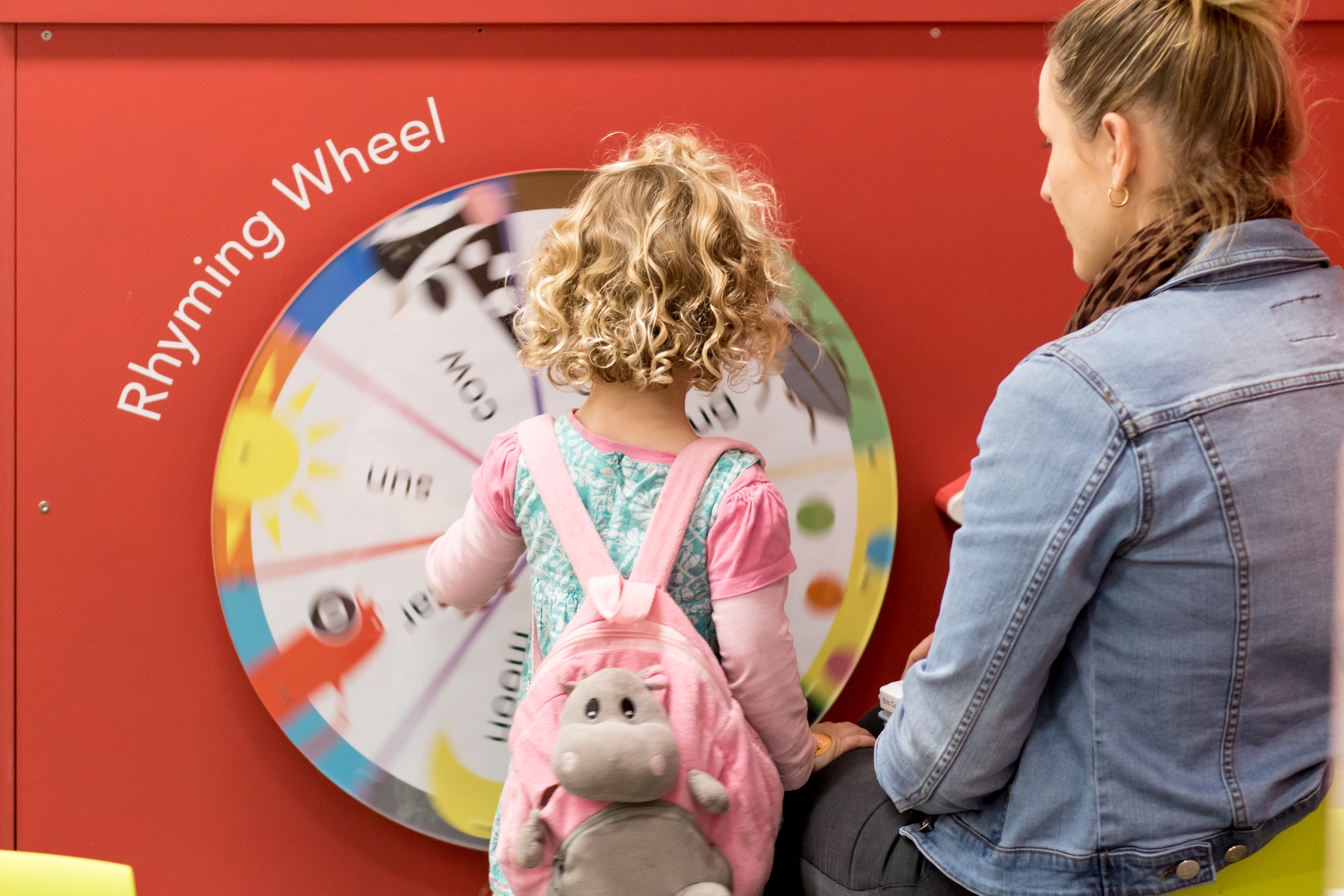Better Beginnings encourages all families to Read, Talk, Sing, Write and Play with their child every day.
Toddlers are learning new concepts, words and gaining new skills every day. The pace of development is rapid at this age. In fact, by the age of 3 years old, a toddler’s brain is 75% the size of an adult brain!
Better Beginnings believes that public libraries are perfectly positioned to continue the encouragement of good home literacy practices in families with toddlers in their communities.
Here is a guide to the developmental timeline of literacy related skills for toddlers and some suggestions for how libraries can encourage and resource parents to keep supporting the development of their child’s early literacy.
18 - 24 months:
- Turns book pages without help – especially board book pages made of thick cardboard. Experiencing books for themselves helps develop a child’s Print Concepts. Continue to accept that damage to books by normal toddler behaviour e.g., tearing and scribbling, is a natural part of learning to love books and reading.
- Finds enjoyment from a regular reading routine and enjoys repetition of familiar books. Explain to parents how repetition is normal toddler behaviour and can help a child to build vocabulary and background knowledge. Help child to find quality books using resources such as the Better Beginnings Book Finder and 30 Books lists.
- Able to name familiar objects and pictures and can use short phrases when talking. Encourage parents to extend conversations with their child using open ended questions. These are questions that can’t be answered with just a yes or no answer.
- By 24 months, most children have a vocabulary of between 50 - 100 words. Children will usually understand far more words than they can say. Encourage parents to keep reading and singing to their toddler, as children’s picture books and songs have a wider range of words than are used in adult to child conversation. Select books that have rich vocabulary to share aloud during early childhood library programs.
- Most children start to sing at around 22 - 24 months. Toddlers are often able to sing longer phrases than they can speak. Choose a variety of action rhymes and songs for your programs that include opportunities for toddlers to dance, march and move. Encourage children and adults to join in with any repeating refrains or chants that are in the stories you share.
- Enjoys pretend play based on familiar activities from everyday life or stories. Select simple crafts that could be used in pretend play to extend the Story Time experience to home play, e.g. headband hats, simple pop stick masks or puppets to encourage retelling of stories to strengthen Narrative Skills.

2 - 3 years:
- Interaction with books is becoming more sophisticated. Talk about the different parts of a book and the roles of authors and illustrators when you share stories at Story Time.
- Children can answer some "what" and "who" questions posed by adults when sharing stories. At Story Time, asking questions before or after you read the story can sometimes work better than stopping mid-story in a group situation. Asking individual children open ended questions while they do their craft can be a better strategy! Ask children to tell you about something that happened to them that relates to the book.
- A child’s vocabulary is expanding daily, but they can still understand more words than they use. Factual books can build both Vocabulary and Background Knowledge. Include simple Junior Non-Fiction books in your collection on topics of interest to this age group e.g. dinosaurs, animals and vehicles, to encourage parents to consider borrowing and sharing Junior Non-Fiction books with their children.
- Begins to talk in simple sentences, repeats words and phrases, asks and answers questions and expresses likes and dislikes. A child at this age needs between 5 - 12 seconds to hear and respond to a question. Give them time to answer before you ask the next question.
- Moving to music is fun at this age: walking, marching, dancing, jumping, running and twirling. Include rhymes and songs in your Story Time programs. Include borrowable recorded music in your Junior collection.
- Makes marks purposely with writing materials. Vertical and horizontal lines are the first lines that a child will make on purpose. Offer different media in Story Time craft time to practice their ‘writing’ e.g. blackboard and chalk, crayons, markers.
- Begins to notice print in books and signs. Point out some of the words in the books you read at Story Time by running your finger under the words as you read them to build Print Awareness. Select books with font that is easy for children to notice e.g. different sized text on the one page, text that moves around the page, text in speech bubbles.
- Play is mostly parallel at this stage, alongside but not with peers or siblings. At this age, children find it hard to share. Make sure there are enough resources for each child to play or craft with.
Selecting Books for Toddlers
Include some books in your Junior collection that:
- are in both board book and regular book format as toddlers may read both formats
- have flaps or tactile elements
- have clear pictures of faces, families, familiar characters, animals, daily routines and food
- have rich vocabulary
- are simple factual books
- have rhyming text or have repeated refrains
- are nursery rhyme collections
- explain new experiences, e.g. having a haircut
- have simple storylines
- are textless books or books with only a few words on each page
- introduce children to new concepts, e.g. opposites, spatial relationships, numbers, feelings
- are alphabet books with both upper- and lower-case letters
- explain early concepts such as colours, shapes and size
- have interesting fonts and text arrangement
- reflect the diversity of your community and the world.
For book suggestions suitable for toddlers, refer to the recommended titles on the Better Beginnings booklists. You can also search for other titles using the Better Beginnings Book Finder.

